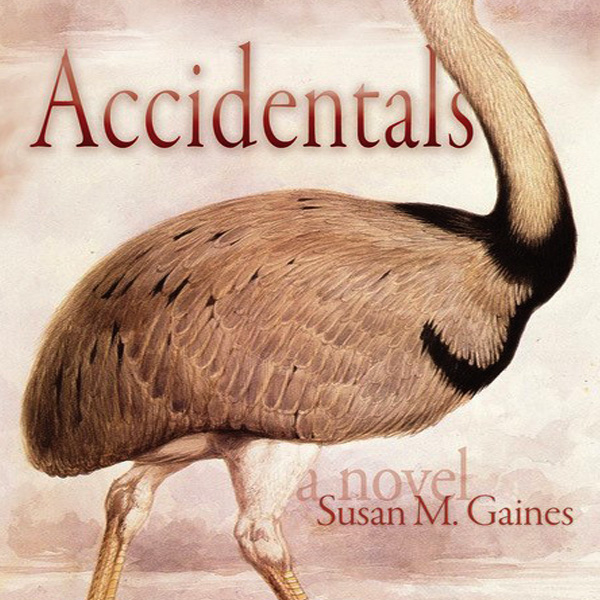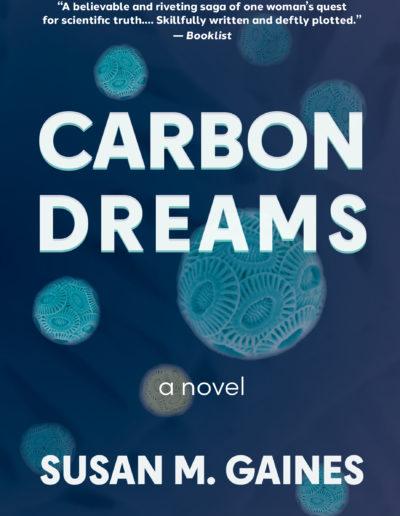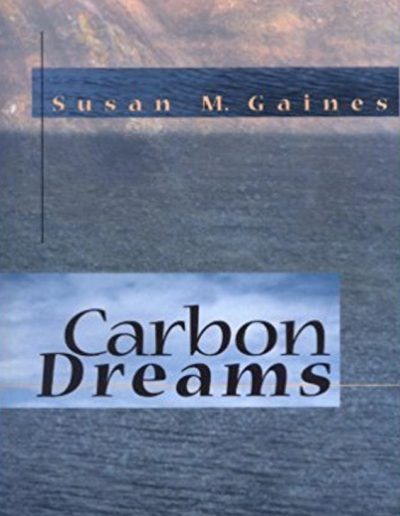Reflections on Writing Carbon Dreams, Two Decades on
(Preface to the 2022 reissue, available October 18)
When I was a college student, I fell in love with chemistry. I was first seduced by chlorophyll, the most glorious and multitalented of nature’s molecules, and my infatuation quickly expanded. Though I’d spent my adolescence reading fiction and dreaming of becoming a novelist, I ended up in graduate school at the Scripps Institution of Oceanography in the late 1980s. I loved—I still love—chemistry’s extraordinary power to explain the natural world, from the tiniest alga to the evolution of Earth. But after several years doing research, I realized science had crowded literature out of my life—that I simply didn’t have the wherewithal for both—and jumped ship.
It was an all-or-nothing decision, or so I thought: I turned my back on science and found a mindless “day job” to pay the rent while I set about honing my skills as a writer.
I’d placed a half dozen stories in literary magazines, garnered a couple of Pushcart Prize nominations, and relegated a 350-page novel to the Graveyard of Unpublished First Novels, when I began to conceive the character of Tina Arenas. I was writing about peoples’ relationships to the natural world, and I found myself wanting to write about a character whose view of nature is informed by chemistry and geology.
I immersed myself in the scientific journals I’d long since given up paying attention to, reading more broadly and impulsively than I’d ever been able to do as a graduate student. I hadn’t expected my love for chemistry to infiltrate my fiction, but the more I read, the more excited I got about the idea of writing about molecules and earth history. In a novel, I thought, I could explore the mysteries of the earth’s carbon cycle and ponder what it meant that humanity had consciously, if unintentionally, short-circuited that cycle. I could personalize and wax poetic about the science and, I realized as the book took form, examine its murky nexus with politics, something I hadn’t given much thought to before.
In 1992, when I began work on Carbon Dreams, I hadn’t seen much science in the sort of fiction I liked to read, which tended to focus on characters’ social and emotional lives. But I was inspired by novels in which readers were transported into other realms of recondite knowledge, such as philosophy, music, classical literature, and anthropology—novels where the characters’ intellectual lives were center stage. I took courage from the fact that I enjoyed and even learned from these stories, despite having zero knowledge of their subject matter. [1] Still, I worried about the hard science I was including. I was writing a novel whose plot was based on research papers in Nature and Global Biogeochemical Cycles—a novel whose main character’s emotional and intellectual selves are so entwined that she dreams in the iconic language of organic chemistry. I worried about accessibility and verisimilitude, about realism and fiction, about oversimplifying or not simplifying enough. I worried readers with no science background would be overly challenged, or that scientists would be uninterested, or worse, find fault.
When Carbon Dreams was finally published in 2001, science was still a rare subject in literary fiction, climate change was a non-existent theme,[2] and anti-science attitudes were on the rise. I was nervous about how readers would engage with the novel. The science of the human-induced greenhouse effect and its potential to disrupt Earth’s climate had been established in the 1950s and sixties, and though I was aware of the difficulties of weening humanity from fossil fuels, it was only when going through old newspaper archives, that I understood how the science itself had been questioned and systematically misconstrued in the public arena. Now I worried that my exploration of the complexities of the carbon cycle, not to mention the uncertainties and ethical challenges in my oh-so-human scientist characters’ daily work lives, might feed into the ongoing misinformation campaigns. But as the book made its way in the world, I was gratified to learn that even readers who felt intimidated by science were enjoying the excursion into Tina’s world. Some said it was the first time they had given any serious thought to climate change. College instructors added the novel to their syllabi, using it to get students thinking critically about how scientific theories are developed, verified and used. Young women said they were inspired by Tina’s story, and feminist scholars embraced its tale of two generations of women scientists working in a male-dominated field.
The response to Carbon Dreams in the scientific community delighted me. Scientist readers said the novel humanized their work and allowed them to talk about ethical and social aspects they had no other outlet for. They reviewed it in their journals, pressed it on their non-scientist spouses, and bought copies for new graduate students. Earth scientists told me that Tina’s story articulated their anxieties about discussing their research in the public arena—about trying to be true to the nuances of fact without negating the existence of the facts.
That was in the early 2000s. In the ensuing years, most of those same scientists have been compelled to speak publicly about their research and its implications. As we crossed the point of no return from catastrophic climate change, many turned in desperation to the blunt tools of activism—which would have seemed an unconscionable transgression of the scientific creed to Tina in the 1980s.
Modern humans have effectively destabilized the entire earth system and collapsed geologic time into human time, inaugurating a geologic epoch that promises to be as precarious and unstable as the twelve-thousand-year Holocene was stable. As I write these words, earth scientists are working to add the Anthropocene Epoch to the geologic time scale, and its name has already entered the common parlance. Earth, in humanity’s hands, is on track to a climate that resembles that of the ice-free mid Miocene—many millions of years before the emergence of the diverse ecosystems that hosted the evolution, dispersal, and history of homo sapiens. We can now see and experience the rising sea levels, escalating extinction rates, and ever-more frequent and extreme droughts, fires, hurricanes, floods, and temperatures that Tina could only imagine. This is humanity’s present and Earth’s future, with or without us.
Carbon Dreams revisits a pivotal historical juncture—both scientific and political—in this transformation, and I’m pleased that it will now be available for new generations of readers, who are grappling with their own or their forebears’ tragic failure to pivot. My hope is that they can enjoy their sojourn into Tina’s world of molecules and deep time, even as they grapple. I have added only minor edits to the 2001 publication and resisted updating the science—including the geologic timeline in the frontispiece—but I have updated the Author’s Note at the end, for those who wish to track down my inspirations in the actual scientific research behind the fiction.
Science is now a central element in fiction of all sorts, and I’m proud of my small role in that development. Though I still worry about the uses and abuses of such stories in a society where the real and the fictional are so concertedly conflated, we need them more than ever, if we are to make sense and meaning of life on this Anthropocene Earth.
Susan M. Gaines
January 1, 2022
[1] I didn’t discover Richard Powers’ The Goldbug Variations (1991) about music and molecular biology until Carbon Dreams was well underway, but Norman Rush’s Mating, about social anthropology (1991), Rebecca Goldstein’s The Mind-Body Problem about philosophy (1983), and A.S. Byatt’s Possession about literary scholarship (1992) all influenced my thinking and broadened my conception of what a novel could do.
[2] Speculative works featuring the human-induced greenhouse effect began to proliferate around that time, with T.C. Boyles’ A Friend of the Earth (2001), Kim Stanley Robinson’s Science in the Capital series (2004-2007) and Margaret Atwood’s Oryx and Crake (2003) leading the way. But even in speculative fiction, the topic received little serious attention until the 2010s.


